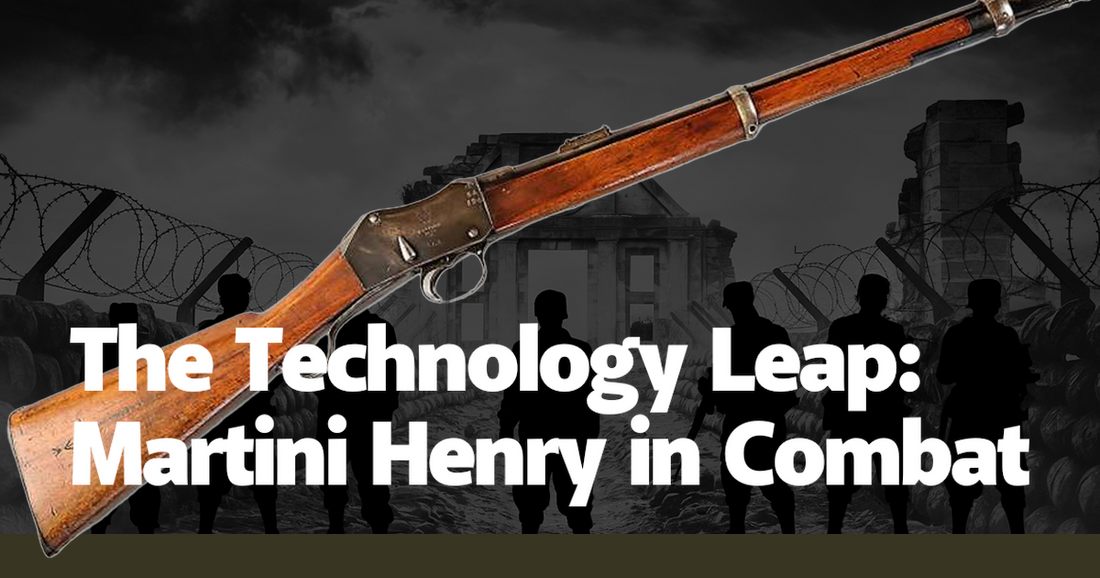In the annals of military history, few weapons have left as indelible a mark as the Martini-Henry rifle. Introduced in 1871, this single-shot, breech-loading rifle revolutionized British infantry tactics and marked a significant technological leap forward in combat. The Martini-Henry's design was a response to the shortcomings of previous muzzle-loading rifles, which were cumbersome and slow to reload. The rifle's innovative mechanism allowed soldiers to load and fire with unprecedented speed and efficiency, making it a formidable tool on the battlefield. This technological advancement not only changed the dynamics of engagements but also altered the very nature of military strategy during the late 19th century.
The Martini-Henry rifle's impact was first felt during the Anglo-Zulu War of 1879. British soldiers, armed with these new rifles, faced the Zulu warriors at the Battle of Rorke's Drift. Despite being vastly outnumbered, the British troops were able to hold their ground, thanks in large part to the rapid firing capabilities of the Martini-Henry. The rifle's .45 caliber rounds were devastatingly effective, capable of penetrating the traditional hide shields of the Zulu warriors. The battle became a legendary example of how technological superiority could influence the outcome of combat, and the Martini-Henry rifle was at the heart of this paradigm shift.
The rifle's design was a marvel of engineering for its time. The Martini-Henry featured a falling-block action, which allowed the shooter to open the breech by pivoting a lever. This mechanism made reloading much quicker compared to the older muzzle-loading Enfield rifles. Additionally, the rifle was equipped with a rifled barrel, which increased accuracy and range. Soldiers could engage targets at distances up to 1,200 yards, a significant improvement over earlier firearms. This increased range allowed British forces to engage enemies from a safer distance, reducing the risk of close-quarters combat and minimizing casualties.
Anecdotes from soldiers who used the Martini-Henry in combat provide a vivid picture of its effectiveness. One such account comes from Private Frederick Hitch, a defender at Rorke's Drift, who described the rifle as a "life-saver." Hitch recounted how the rapid fire of the Martini-Henry allowed him and his comrades to repel wave after wave of Zulu attacks. The rifle's reliability under the harsh conditions of battle was another key factor in its success. Unlike earlier firearms, which were prone to misfires and jams, the Martini-Henry was remarkably dependable, even in the heat of combat.
The technological leap represented by the Martini-Henry also had broader implications for military strategy. The increased firepower and range of the rifle necessitated changes in infantry tactics. Traditional line formations, where soldiers stood shoulder to shoulder and fired volleys, became less effective. Instead, armies began to adopt more flexible and dispersed formations, allowing soldiers to take advantage of cover and concealment. This shift in tactics was a precursor to the modern infantry tactics used today, where mobility and firepower are paramount.
The Martini-Henry's influence extended beyond the British Empire. Other nations took note of the rifle's capabilities and sought to develop their own breech-loading firearms. The technological race to create more advanced weapons was on, leading to rapid advancements in firearm technology. The lessons learned from the Martini-Henry's deployment in combat informed the development of future rifles, such as the Lee-Metford and the Lee-Enfield, which would go on to serve the British military for decades.
Despite its many advantages, the Martini-Henry was not without its flaws. The rifle's powerful recoil was notorious for causing shoulder injuries among soldiers. Additionally, the black powder cartridges used by the rifle produced a significant amount of smoke, which could obscure vision and reveal the shooter's position. These drawbacks were eventually addressed in later firearm designs, but they serve as a reminder that even revolutionary technology has its limitations.
In conclusion, the Martini-Henry rifle represents a pivotal moment in the history of military technology. Its introduction marked a significant leap forward in firearm design and had a profound impact on combat tactics and strategy. The rifle's legacy is evident in the continued evolution of military firearms, and its influence can still be seen in modern weaponry. The Martini-Henry's story is a testament to the power of innovation and its ability to shape the course of history.

